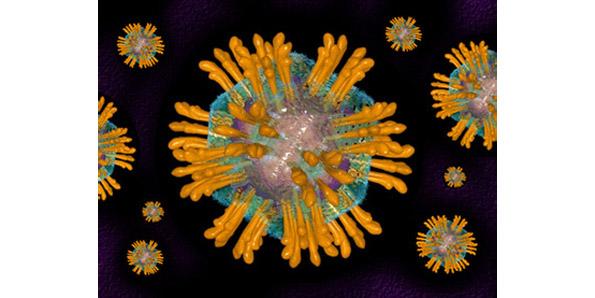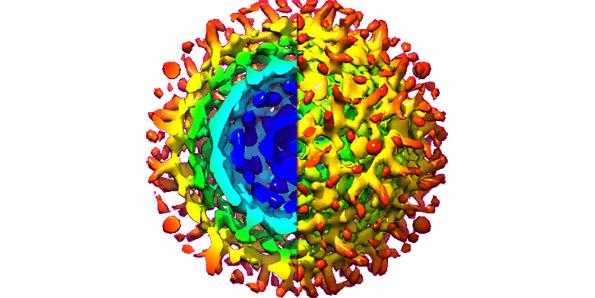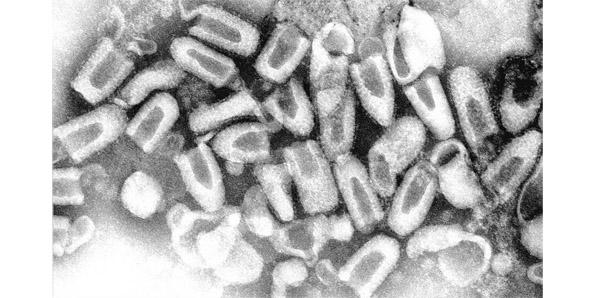Viruses can be defined as a microscopic infectious pathogenic agent that can only replicate within the living cells on an organism. In other words, even though they are rather small and can be observed exclusively through the lens of a microscope, their nature as well as the fact that they infect virtually any type of organism from humans and animals to plants and bacteria is what makes them the world’s most prolific killers.
In spite of the efforts medicine has made to eradicate them through the ages, the viruses are very resilient and new ones appear every day. In fact, nowadays over 5,000 known viruses claim the lives of thousands of people worldwide. Let’s find out the more about the invisible assassins out there that are on the lookout for their next victim.
1. HIV
HIV or the Human Immunodeficiency Virus represents the deadliest virus of the planet. HIV kills over 3 million people each year needs no further presentation, it has no effective cure except prevention, it can stay latent for more than 15 years and it leaves the infected person defenseless in the face of numerous infections.
2. H1N1 virus
When Alexander Flaming discovered penicillin, it was believed that medicine had finally found a cure for the common cold and its older eccentric brother, influenza. Nothing can be further from the truth and the recent epidemics of swine and aviary flu stand as proof of that. The H1N1 virus is an airborne agent that quickly makes its way into the lungs and takes hold of the mechanisms of the cells. While many infected people recover within a maximum of two weeks, it is necessary to mention that the infection is highly contagious and that people with preexisting respiratory conditions face a high risk of death.
3. HCV
At this point, it is estimated that around 300 million people are infected with HCV or Hepatitis C and they do not even know it. In fact, most of the individuals only learn about the condition years later when they first experience signs of liver failure. The good news is that the infection only spreads via direct contact with the blood, mainly from tattoos, piercing, sharing a syringe needle, blood transfusion and organ transplants. While the chances of contagion are limited, the WHO reports that Hepatitis C is the main reason for liver transplants. Deaths due to liver failure and complications are estimated at half a million globally per year.
4. Rotavirus
According to the World Health Organization, every child on this planet will get infected with the Rotavirus at least once until the age of five. While in the developed countries the Rotavirus is very unlikely to claim any victims, in under-developed states it takes the lives of more than half of a million children. Take note that while the virus affects the digestive tract and its main symptom consists of diarrhea, it is not mandatory that a child exhibits this sign during a Rotavirus infection.
5. HBV
Similar to Hepatitis C, the virus responsible for Hepatitis B can be transmitted via exposure to infected blood. Even though the virus attacks the liver, the WHO claims that over 90% of the adults and older children contaminated with Hepatitis B will make a full recover, despite the fact that there is no specific treatment for the infection. However, compared to HCV, the symptoms of Hepatitis B are more unpleasant, as its trademark consists of a persistent yellowing of the skin.
6. Measles
Getting infected with the virus responsible for measles in not dangerous in itself and there are numerous treatment available to counter the spreading of the infection. The reason why measles kill a little under 200,000 people worldwide consists of the fact that most patients prefer to ignore the cold-like symptoms specific to the infection and consequentially develop lethal complications such as measles myocarditis, encephalitis, pneumonia and many other secondary bacterial infections.
7. Hantavirus
Rodents and particularly mice are not only invading people’s homes and feeding on their food: they are also the main carriers of the Hantavirus, an infectious agent known for causing two dreadful conditions, the hemorrhagic fever with renal syndrome and the Hantavirus pulmonary syndrome, discovered rather recently. Unfortunately, a person does not need to be in direct contact in order to get infected and most of the victims die within a few days after the symptoms start manifesting.
8. Rabies
If you ever wondered why the local authorities go through so much trouble to shoot a straight dog or rampaging wild animals that get too close to the residential areas, then you should know it is because they are trying to prevent an infection with rabies. Although there are several methods to prevent this virus from reaching the central nervous system – some even after the symptoms have started kicking in – deaths due to rabies worldwide are still exceeding 50,000.
9. The yellow fever virus
Except the bubonic plague that eradicated half of Europe’s population during the Middle Ages, there is no other comparable agent that could prove as deadly as the yellow fever virus in recorded history. While many consider that the outburst of yellow fever in early 1900s Spain is a thing of the past, keep in mind that the virus has not been eliminated yet. In fact, it is prevalent in Western Africa and the infection is only a mosquito bite away. What makes this pathogenic agent a threat is the fact that it attacks the lymphatic system and the vital organs, killing one out of two infected people.
10. The Dengue fever virus
In spite of the fact that the Dengue fever virus does not currently claim the lives of millions of people across the globe, the WHO reports indicate that the infection has currently reached an epidemic state in more than 100 countries. And, because traveling is so simple and convenient nowadays, it is also estimated that two fifths of the world’s population are at risk of developing Dengue fever. It is important to note that the virus is dangerous because it can be transmitted via Aedes mosquito bites that only need to feed once on an infected human in order to acquire and further transmit the virus to their next victims.











Leave a Reply